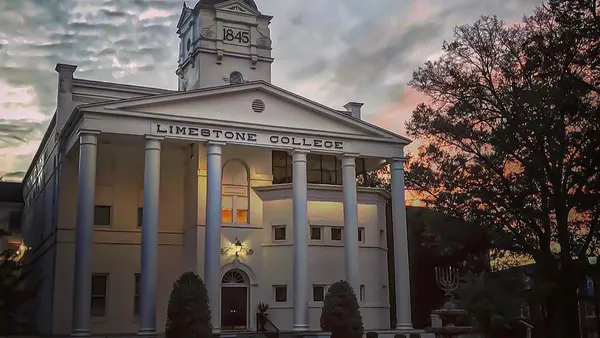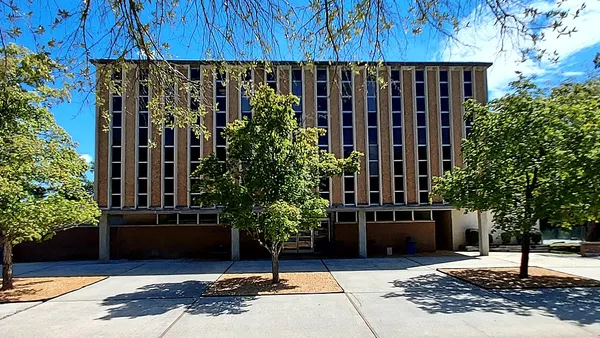Ricardo Azziz has held numerous executive positions in higher education and led the merger that resulted in Georgia Regents University, now Augusta University. He is principal at Strategic Partnerships in Higher Education, or SPH, Consulting Group.
He writes the regular Merger Watch opinion series on corporate restructuring in higher education.
Declining enrollment has increased the financial challenges of most types of colleges. All sectors of institutions, when viewed by size, have recently experienced enrollment decreases — with the exception of the colleges that enroll over 30,000 students.
Institutions with fewer than 1,000 students have seen the most significant decrease in enrollment, which has declined 36% between fall 2012 and fall 2021. Paradoxically, larger colleges and universities that enroll between 20,000 and 29,999 students — which are often regional institutions — also lost 30% of their enrollment over that same period.
The U.S. is not alone in facing declining college enrollment, mostly stemming from a drop in the number of high school graduates. Several other countries in Europe and elsewhere are facing similar challenges.
What makes our higher education system more fragile than the situation faced by other Western nations is that the U.S. has, proportionally, many more small and private institutions.
Small institutions in the U.S. — defined as those with under 5,000 students — accounted for 75% of all degree-granting colleges eligible for Title IV federal financial aid in fall 2021.
However, the proportion of degree-granting institutions of higher education with fewer than 5,000 students in Europe was lower than that in the U.S. Those institutions comprised 54% of 2,963 overall institutions, according to the 2021 European Tertiary Education Register database, which includes information about 41 European countries. That share rises to 59% when excluding 244 institutions for which there was no enrollment data.
Overall, we should note that in fall 2021 there were more students enrolled in European than in U.S. higher education institutions, 28.5 million vs. 18.6 million. That’s despite the fact that European students have fewer enrollment options.
Interestingly, some research analyzing Europe’s higher education landscape raises questions about how many small institutions the continent has amid increased consolidation in the sector.
Alternatively, while higher education policy-makers in the U.S. are beginning to express concern over institutional closures, I have not seen any actually refer to the very high numbers of smaller schools we have in the U.S. as a potential risk.
It’s unclear whether this is due to a lack of awareness of the situation, an interest in not antagonizing a large proportion of college institutions and leaders, or simply because we view smaller colleges as more valuable.
Finally, public higher education institutions make up 55% of colleges in Europe. That’s compared to 42% in the U.S.
Why are there greater shares of smaller and private colleges in the U.S. compared to Europe — and a larger percentage of students attending them? It is a product of its history.
My friend and colleague, Lloyd Jacobs, who oversaw the merger of the Medical University of Ohio and the University of Toledo, eloquently explains this phenomenon in our upcoming book, “Leading Existential Change in Higher Education: Mergers, Closures and Other Major Institutional Restructuring.”
“The size, the shape and the professed mission of American higher education reflects the growth of democratization into a largely rural, widely spread, westward moving population,” Jacobs wrote.
The development of higher education in the U.S. began in the mid-1600s in large and small communities across the nation. The sector was established by private donors, churches and localities. Consistent with the American ethos, great emphasis was placed on the private and autonomous nature of these institutions.
Moving forward, many of these institutions have grown enormously. Think Harvard, Yale and Columbia universities, as well as the University of Pennsylvania. But myriad other institutions have grown only modestly, remaining small and tied to their local communities, which are often also small.
But, as I often say, what got us here cannot necessarily get us there. The structure of much of the higher education sector in the U.S. — private, intimate, locally-focused, and small — is rapidly becoming unable to address the demographics and economic challenges of the future.
How can small private colleges and universities best prepare for the future? Governing boards, executive leaders and policymakers can take three actions:
- Be willing, in fact be determined, to seek out and face the realities, opportunities, and, most importantly, the challenges of the current and, most importantly, the future environment. That includes its projected demographics, economics and needs.
- Be willing to accept that in a market where there is massive excess capacity, declining demand and rising costs, consolidation will be inevitable. Understand that for many institutions, remaining small or getting smaller is simply not a financially viable option, considering the increasing and rightful reticence of students and their families to foot an increasing share of the bill. Mergers, although difficult, may be the best solution for many institutions to retain a modicum of their heritage, mission and service.
- Be willing to start now, hopefully well in advance of any significant financial challenges. Leaders should explore all options before the institution has lost most of its presentable assets, including its brand, enrollment and financial solvency. Because, like any other relationship, finding a partner institution will greatly depend on how attractive your own institution can be. And like any other relationship, attractiveness comes in many packages.
Institutional leaders should be unafraid to explore all strategic and tactical options to address an increasingly challenging future, including potential mergers. A merger should not be considered the option of last resort. And leaders should not wait until it is too late — for the sake of their heritage and their students.










